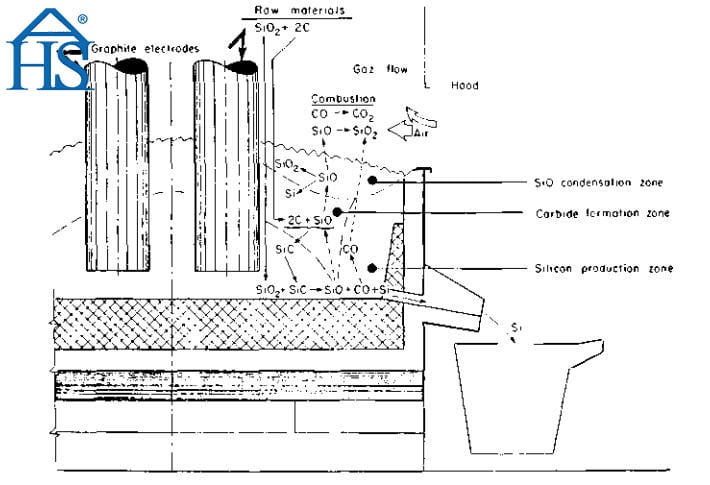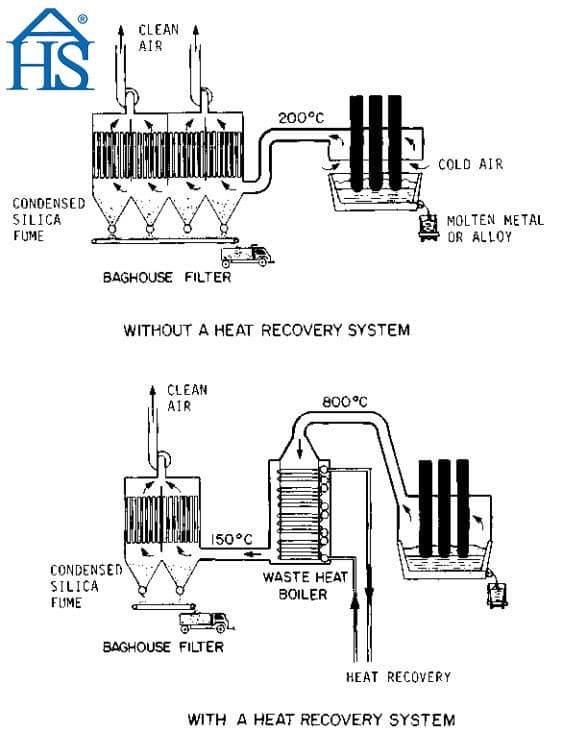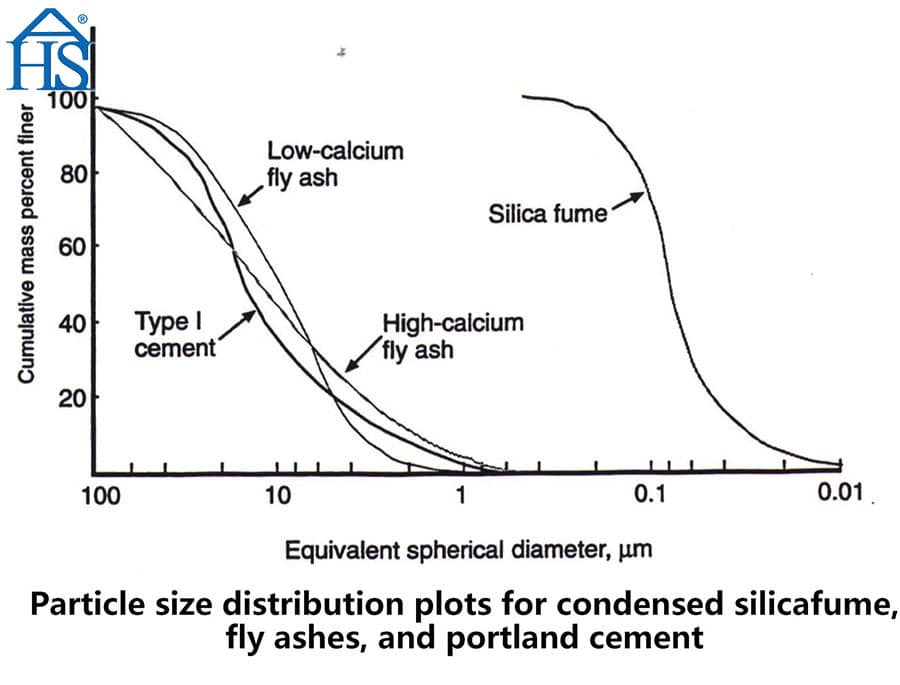What is Condensed silica fume?
Condensed silica fume is a by-product of the manufacture of silicon or of various silicon alloys which are produced in so-called “submerged-arc electric furnaces”.
Condensed silica fume particles appear to be formed by the oxidation and condensa-tion of the gaseous silicon suboxide, SiO, which is formed in the reaction zone. When solidified condensed silica fume particles are entrained by the reaction gas or the reac-tion gas-air mixture coming from the furnace, they are collected in a dedusting system, generally in fabric bag filters.
As in many other highly technological industries, the silicon alloy producers have developed a whole range of specific products for specialized applications. Moreover, the customer’s specifications for silicon alloys have become more demanding so that a given producer must use different raw materials to produce a certain type of alloy. As different types of silicon alloys have been produced in submerged electric arc furnace, there have been correspondingly different types of condensed silica fume, just as there have been different types of fly ashes and slags, depending on the type of coal burned or the type of iron ore processed.

Production of Condensed Silica Fume

The use of wood chips in the burden can also influence to some extent the chemical composition of condensed silica fume, especially its carbon content, and also the loss on ignition (LOI) and the alkali content.
The design of the furnace, with or without a heat recovery system, not only influ-ences the color of condensed silica fume, but also its chemical composition, especially its carbon content. When the furnace is equipped with a heat recovery system gases leave the top of the furnace at about 800°C so that most of the carbon is com-pletely burned. In a conventional furnace, gases leave the furnace at about 200°C so that unburned carbon particles and some wood chips will be collected in the bag-house with condensed silica fume.
Além disso, the chemical composition of quartz and coal, the two major compo-nents of the burden of the submerged-electric arc furnace, influences to some extent the chemical composition of condensed silica fume. Although these materials are gen-erally of high purity, they have to be very carefully selected and controlled.
Generally as the amount of silicon increases in the final product the level of chemical impurities in condensed silica fume decreases.

Advantages of Condensed Silica Fume in Concrete
1. Propriedades químicas e físicas muito estáveis
Condensed Silica fume serves as a neutral filler with incredibly stable properties, químico e físico. Não contém água cristalina, não participa da reação de cura, e não afeta o processo de reação de forma alguma.
2. Increased Thermal Conductivity
Not only can silica fume increase thermal conductivity, but it can also improve flame retardancy and change the adhesive velocity.
3. Bom desempenho de adsorção
Fumaça de sílica has a good adsorption performance, bem como boa infiltração para vários tipos de resina. Além disso, É fácil misturar sem fenômeno de aglomeração.
4. Precipitação e estratificação reduzidas
Devido à sua distribuição razoável e tamanho de grão fino, A sílica fumaça pode efetivamente eliminar a estratificação e reduzir a precipitação.
5. Improved Strength
The reasonable size distribution of silica fume ensures good hardness, strong densification, and great wear resistance. Adding silica fume to concrete can improve the wear resistance, compressive strength, and tensile strength of cured products. Além disso, the abrasion resistance can be increased by 0.5-2.5 times.
6. Improved Insulation
Silica fume presents pure silicon powder with a low amount of impurities. As such, it possesses stable chemical and physical properties that ensure good arc resistance and insulation of the curing material.
7. Reduced Overall Costs
The bulk density of silica fume ranges between 0.2 e 0.8 or 1.0 e 2.2. When used as polymer filling material, microsilica can reduce the total cost of the product by saving the amount of polymer and minimizing the amount of loading.
8. Melhor resistência à corrosão
Sílica fume é composta de sílica, ou SiO2, que é um material inerte. Isso significa que a sílica fume não reage com a maioria dos alcalóides ou ácidos, e o pó de silício é distribuído uniformemente sobre a superfície dos objetos. As such, silica fume contributes to improved cavitation and corrosion resistance by 3 para 16 times.
9. Shortened Induction Period
Adding silica fume to concrete can shorten the induction period and provide early strength.
10. Crack Prevention
Silica fume can reduce the peak temperature achieved during the curing reaction of epoxy resin. Além disso, it reduces the shrinkage rate and linear expansion coefficient in solidified concrete, thus reducing the internal stress and preventing cracking.
11. Improved Frost Resistance
The relative elastic modulus of microsilica is only 10 para 20 percent after 300-500 Ciclos de congelamento e inchaço. At the same time, the average elastic modulus of usual concrete is 30 para 73 percent after 25-50 cycles. As such, adding microsilica to concrete can significantly improve its frost resistance.
Condensed Silica Fume Supplier
Abrasivos superiores de Henan is one of the largest suppliers of silica fume in China, we supply silica fume to many famous companies around the world, such as sika, elkem, etc.. We can supply densified and undensified silica fume with 85%-99% silica content.We can also produce according to your requirement. The machine is automatically packed and filtered by a screen, so that no debris is mixed in.We are the only silica fume factory in China that uses machine packaging.
Feel free to contact us for the latest 2023 quotation of silica fume.
E-mail:sales@superior-abrasives.com
Whatsapp:+86-18638638803





